 捷豹路虎近日揭晓了几大研发项目的内容。
捷豹路虎近日揭晓了几大研发项目的内容。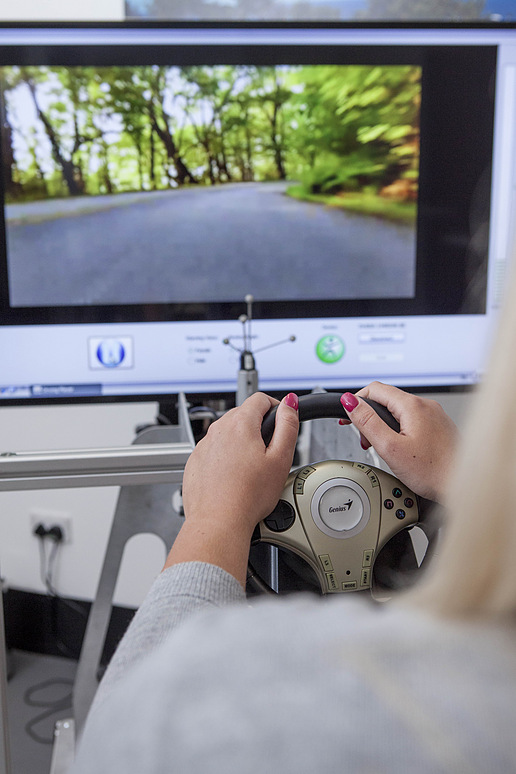 由Laura Millen带领开展的捷豹路虎“头脑感官技术”研发项目,可通过方向盘传感器传输的脑电波信息监控驾驶员的注意力集中程度和警觉性状态。
由Laura Millen带领开展的捷豹路虎“头脑感官技术”研发项目,可通过方向盘传感器传输的脑电波信息监控驾驶员的注意力集中程度和警觉性状态。 捷豹路虎正在研发驾驶员精神集中状态与“健康状态”监控系统。
捷豹路虎正在研发驾驶员精神集中状态与“健康状态”监控系统。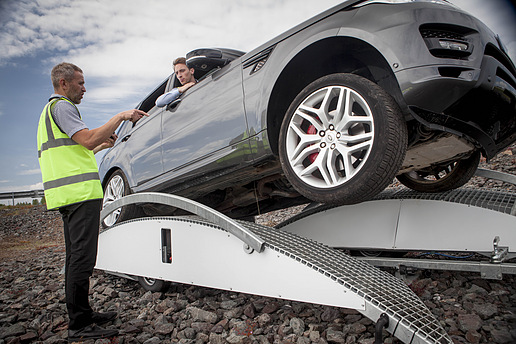 一个车轮腾空,车内没有驾驶员——捷豹路虎正在研发非公路车辆远程控制系统。
一个车轮腾空,车内没有驾驶员——捷豹路虎正在研发非公路车辆远程控制系统。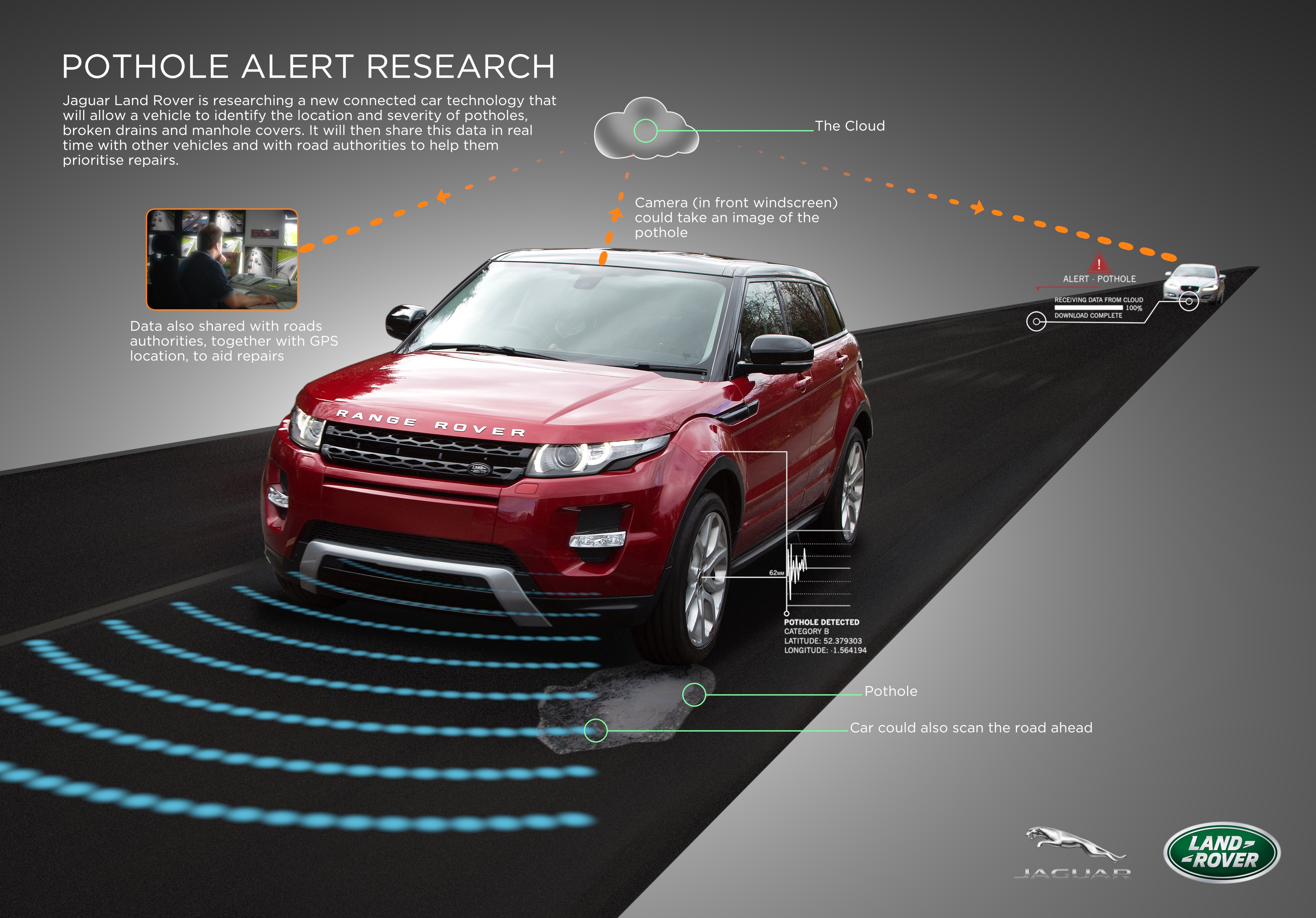 侦测路面的凹坑,并向其他驾驶员发送提醒信息——这是捷豹路虎的一个研发项目。
侦测路面的凹坑,并向其他驾驶员发送提醒信息——这是捷豹路虎的一个研发项目。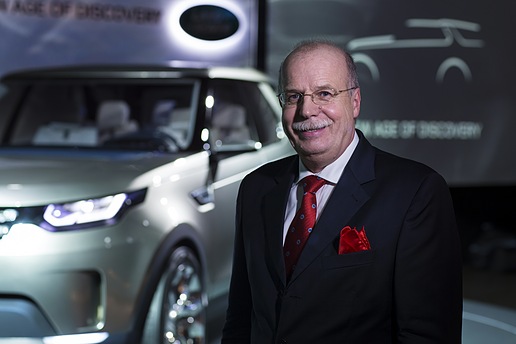 捷豹路虎的研发主管Wolfgang Epple博士认为,未来的自动驾驶汽车将会同时具备智能系统,可以调整驾驶员的主动参与度。
捷豹路虎的研发主管Wolfgang Epple博士认为,未来的自动驾驶汽车将会同时具备智能系统,可以调整驾驶员的主动参与度。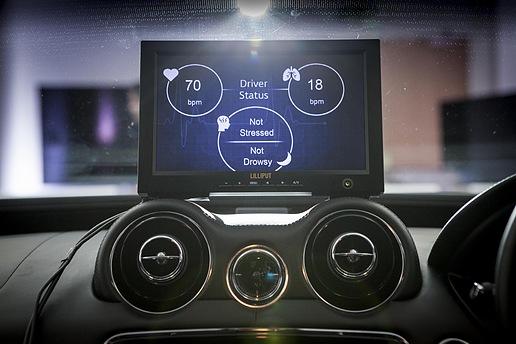 借助驾驶员的心率和呼吸频率测试读数,捷豹路虎正在研究驾驶员的压力与可能存在的疾病对驾驶行为造成的影响。
借助驾驶员的心率和呼吸频率测试读数,捷豹路虎正在研究驾驶员的压力与可能存在的疾病对驾驶行为造成的影响。
在手握方向盘的同时,观察屏幕上像波浪般滚动的α和β脑电波图形,这无疑是汽车研发中最奇特的景象之一。但这的确是捷豹路虎正在进行的一项研究——如何使用高度精细的技术手段,帮助消除驾驶员的疲劳和注意力分散对驾驶行为的负面影响。
“我们的研究项目名为‘头脑感官研究’,最终目标是研发出一种系统,可以判断驾驶员的精神是否集中,能否保持警觉和专注力,是否处于分心状态等;这些都是通过对大脑状态进行监测而得知的,”人因研究员兼项目主管Laura Millen博士表示。“我们不能要求驾驶员头上顶着一个有传感器的耳机,所以还要找到一种非侵入式方式,且能有效收集数据。”
而他们经过反复思考后,设计了这只世界上最与众不同的方向盘。这个方向盘同时也是一个全新测试台的一部分。Millen博士说:“我们使用方向盘背面上方的四个传感器,对原型机的效果进行评估。”
α和β脑波的监测读数,显示在测试台前方的一个大型屏幕上。需要强调的是,这只是研究装置,绝对不会出现在成品车的平视显示器上。
“大脑会持续不断地产生四种或更多种类的脑电波,它们的速度和频率各不相同。” Millen说,“尽管不同脑电波同时产生并相互交织的,但人在特定时段的的意识状态是由当的支配频段(即最强频段)的脑电波决定的。在睡眠期间,大脑的支配频段是慢速δ波。而在做白日梦时或将醒时分,支配频段就变成了依旧很慢但比δ波略快的θ波。当大脑处于冷静且集中的状态时——比如当一个人正在闭眼放松时,支配脑电波就换成了比θ波更快的α波。”
为了测试驾驶员的注意力集中程度,研究人员让他进行虚拟驾驶,在屏幕上显示的是一条虚拟的蜿蜒道路,此时研究人员使用一个分析系统,为驾驶员的α和β脑电波“打分”,分数范围为0-100分。
还有许多问题需要解决,其中包括如何警告驾驶员(可能是通过方向盘或踏板震动的方式)。在未来,该项目还将吸收神经学家参与。
捷豹路虎研发主管Wolfgang Epple表示:“即使驾驶员的眼睛盯着路面,但如果注意力不集中,或处于白日梦的状态,也意味着他们并没有专注在驾驶任务上。”
除了驾驶员的精神状态外,研究人员还监控他们的身体健康状态。捷豹路虎正在研发一种“健康座椅”,可通过监测心率和呼吸频率来检测驾驶员的紧张程度,以及是否存在严重的健康问题。在研究过程中,驾驶员的心率和呼吸频率都会显示在屏幕上。同样,对驾驶员进行身体状态提醒的方式仍有待进一步研究,而且不能与唤醒注意力的提醒方式相冲突。
在飞机驾驶舱和飞行甲板上使用的语音提示可能是一种选择,但捷豹路虎的研究人员并未对此进行评论。
捷豹路虎的研发范围非常广泛,其中自然包括“自动驾驶汽车”。Epple表示,比起“无人驾驶汽车”这个感性的表述,捷豹路虎更喜欢“自动驾驶汽车”这个名称。“我们希望能让驾驶员在自主驾驶和自动驾驶之间自由选择。这意味着我们最终研发出来的车辆可以按照驾驶员的要求进行自动驾驶,但它同时拥有一套智能系统,可以让驾驶员更多参与驾驶过程,使车辆行驶更加安全。”
捷豹路虎的先进驾驶员辅助系统(ADAS)使自动驾驶成为可能,并使“真实”的驾驶体验更加安全愉快。
ADAS的辅助功能包括主动巡航控制、车道保持、自动紧急刹车等系统,它们可以在无需驾驶员参与的情况下完成多点180°大转弯。此外还有一个驾驶员离车自动驾驶系统可以胜任路虎Land Rover车型99%的非公路驾驶任务。这个系统可以让驾驶员在车外也能控制陷入困境的车辆,使其缓慢前移,而这一切只需在智能手机上进行简单的操作即可完成。记者在捷豹路虎的Gaydon研发中心以乘客的身份体验了这项功能,他坐在车内,但身边没有驾驶员操纵车辆。车辆在一只前轮腾空的状态下越过了一个攻角特别高的障碍物,这个过程非常有意思。
此外,该系统可以用于捷豹路虎的任何一款车型,可以帮助车主从拥挤的停车场中将车辆远程提取出来。
Epple认为,该技术与远程停车控制技术是相互关联,共同演进的,它们将极大地提升公众对自动驾驶汽车的信任度,更公众容易接受这一新概念。Epple将这种技术称为“车辆自动前进技术。”
他认为“一定程度的”自动驾驶技术将在2020年后不久进入市场,最初将用于中间有隔离带的双幅路,随后逐渐用于更窄的道路,而捷豹路虎的全自动驾驶汽车将于2025年面世。
雷达、激光雷达(LIDAR)和立体摄像机将为自动技术提供支持。Epple表示,捷豹路虎要求“感知、运动规划和导航/定位”这三种功能具备不同程度的认知能力。这意味着捷豹路虎汽车的自动驾驶功能不仅能在没有路面警示标志的道路上使用,而且还适用于完全没有道路基础设施的情况,包括在沙漠中。
这个解决方案已经在捷豹路虎的自动驾驶汽车Solo Car上有所运用,并将降低成本的激光雷达传感器(捷豹路虎的研发项目之一)和一系列全新的传感器进行了有效结合。然而在研发新传感器的同时,捷豹路虎也在努力加强现有传感器的功能,公司内部将这一努力称为“物尽其用”。
“运动规划体现出车辆对以下信息的了解——车辆应随时了解自身的位置、即将前往的目的地,以及如何到达目的地。”Epple解释道,“导航/定位则反映了车辆在行驶中的导航能力,以及目前正行驶在整个路段的哪个部分。”
在驾驶过程接近尾声的时候,驾驶主动权将交还给司机。此时车辆会检查驾驶员是否清醒,注意力是否集中,这就是“头脑感官技术”和“健康座椅技术”发挥作用的时候了。
正在研发中的其他驾驶员提醒系统还包括触觉式油门踏板,当骑车人或行人接近汽车的时候,踏板会通过振动或加大扭矩的方式来提醒驾驶员。《汽车工程杂志》的编辑发现,踏板震动提醒很有效,但增大扭矩会令人不安。因为在一些特定情况下,加速就如同刹车一样重要,而在紧要关头却需要驾驶员用更大的力气才能踩动油门,这并不合理。
此外,捷豹路虎还在研发一种预测式触觉设备,可以跟踪车载信息娱乐系统屏幕前方的手部动作,来预测驾驶员将按下哪个按钮。该技术可以将驾驶员“视线离开驾驶前方”的时间减少五分之一左右。在静止状态时的演示结果很有说服力,但当车辆行驶在颠簸路面上行驶——尤其是非公路驾驶工况下,驾驶员的肢体动作无法预测的时候,该系统的效果还需进一步验证。
捷豹路虎的其他研发项目还包括汽车自我学习能力(公司声称这是一项“全球首创”的研发项目),该能力可以“了解”驾驶员上下班时最喜欢听的广播频道,以及在什么时候座椅按摩,需要按摩力度需要多强。
尽管捷豹路虎的科技研发越来越全面,但并未打算让车辆取代驾驶员。Epple笑称:“车上坐的是驾驶员,不会变成货物!”
作者:Stuart Birch
来源:SAE《汽车工程杂志》
JLR reveals some R&D secrets
Watching the alpha and beta waves of one’s brain undulating across a screen while gripping a steering wheel, is one of the more bizarre experiences of automotive R&D. But that is what JLR (Jaguar Land Rover) is putting its mind to as it delves deep into how to eliminate the effects of driver fatigue or inattention using highly subtle techniques.
“Our project is called Mind Sense and has the ultimate goal of developing a system to detect whether a driver is concentrating, alert and focused, or distracted; we are doing so by monitoring what is going on in the brain,” said Dr. Laura Millen, Human Factors Researcher and leader of the project. “We can’t expect drivers to put on a headset carrying sensors so part of our research project is to look for non-intrusive ways to collect the same data.”
The result is what is probably the world’s most extraordinary steering wheel, which forms part of a novel test rig: “We are evaluating a prototype with four sensors on the back of the upper part of the wheel’s rim.”
Readings are presented on a large screen (this is for research only and definitely not something that would appear on a production car’s head-up display!) ahead of the rig, indicating alpha and beta brainwaves.
"The brain continuously produces four or more distinct speeds or frequencies of brain waves," explained Millen. "Although these different brain waves are produced simultaneously and in combination, a person’s state of consciousness depends on the dominant (strongest) frequency band at each time. During sleep, the brain produces dominant slow delta waves. During daydreaming or in the twilight of sleep, the brain produces dominant theta waves that are slow but a bit faster than delta. When the brain is calm and mentally unfocused—for example, when a person relaxes with their eyes closed—the still faster alpha waves are dominant."
To test levels of concentration, the alpha and beta waves are “scored” by an analysis system on a zero to 100% scale as the rig driver watches a screen showing a virtual drive on a winding road.
There are many questions to be resolved, including how to warn a driver (possibly steering wheel or pedal vibration), and later the project will embrace inputs from neuroscientists.
JLR R&D Director, Dr. Wolfgang Epple, said: “Even if the driver’s eyes are on the road, a lack of concentration or a daydream will mean he or she isn’t paying attention to the driving task.”
Complementing this research into a driver’s mental state is the monitoring of his or her physical health. JLR is developing a “wellness seat” that can detect stress, or some serious health issues, via heart- and respiration-rate monitoring. For research, heartbeats and breathing rates appear on displays. Again, alerting methods that don’t conflict with other attention-getters need to be refined.
Voice alerts, such as those used in cockpits/flight decks for aircrew, would seem to be a possible solution, but JLR’s researchers did not comment on this option.
JLR’s R&D operation spreads very wide and not surprisingly covers the “autonomous car,” a phrase Epple said the company prefers to the emotive “driverless car”: “Our vision is to offer a choice of an engaged or autonomous drive. Ultimately, this means that a car could drive itself if the driver so chose, and have intelligent systems that can be adjusted for a more engaging, involved, and safer drive.”
The company’s Advanced Driver Assistance Systems (ADAS) will enable autonomous driving and make “real” driving safer and more enjoyable, he explained.
Supporting this, together with active cruise control, lane keeping, autonomous emergency braking and other systems will be the facility to make a multi-point 180° turnaround without driver input, and an autonomous, driver-out-of-car facility that could cope with 99% of a Land Rover product’s off-road capability. This would enable a driver tackling very difficult situations to inch forward a vehicle remotely by use of a mobile phone with simple controls. Experiencing this at JLR’s Gaydon R&D center as a Range Rover passenger with no driver aboard, progressing over an obstacle to a very high angle of attack with a front wheel in the air, proved interesting.
The system could also be used by any JLR product to remotely extract a car from a hemmed-in parking slot.
Epple believes such technology will prove a major aspect of public acceptance of autonomous vehicles because it will engender trust, much as park distance controls have done. They are all part of an integrated whole and an evolution of technologies that he defines as “autonomous progression.”
He sees “a degree” of autonomy entering the market soon after 2020 for use on dual-carriageways, followed progressively by lesser roads, and with a JLR fully autonomous vehicle a reality around 2025.
This development will be supported by radar, LIDAR, and stereo cameras. Epple stated that JLR required levels of cognitive ability in three components: perception, motion planning, and navigation/localization. This would give a JLR vehicle autonomous capability not only on roads without surface warning markers but also without roadside infrastructure including deserts.
Such a solution has been dubbed by JLR the Solo Car, able to take care of itself and incorporating reduced-cost LIDAR sensors (JLR has a program to achieve this) working with a range of new and different sensors. However, where possible JLR is extrapolating the capability of existing sensors, known within the company as “sweating the assets.”
“Motion planning describes the vehicle’s understanding of where it is at any given point, where it has to get to, and what it needs to achieve that,” explained Epple. “Navigation/localization describes the vehicle’s ability to navigate to the destination but also understand on which part of the journey it is currently traveling.”
In handing over to a driver at completion of what may be a lengthy autonomous journey phase, a vehicle could check that the driver is awake and paying attention, which is where Mind Sense and the Wellness Seat enter the equation.
Other R&D systems to support or alert the driver include haptic accelerator pedals that will vibrate or need added torque to operate, to get attention for such things as cyclists or pedestrians entering the car’s vicinity. This Automotive Engineeringeditor found the pedal vibration warning technique effective but added torque disconcerting; there are situations when accelerating can be as necessary as braking, and a throttle pedal requiring an extra shove in a looming potential emergency was unconvincing.
JLR has also developed a predictive touch prototype that tracks hand movements in front of an infotainment screen to predict which button a driver will press. This is to reduce “eyes out of cockpit” times by about a fifth. A static demonstration was convincing but a demonstration was required of the system in a car on a poor surface with the vehicle experiencing unpredictable body movements, particularly off road.
Other JLR programs include the self-learning car (claimed as a “world first”) that can “know” what radio stations are a driver’s favorite when driving to and from a workplace and what level of driving seat massage is required and when.
However, though JLR works towards ever more technologically comprehensive products, it has no plans to replace the driver, quipped Epple: “The occupants of our cars will not become cargo!”
Author: Stuart Birch
Source: SAE Automotive Engineering Magazine
等级
打分
- 2分
- 4分
- 6分
- 8分
- 10分
平均分
